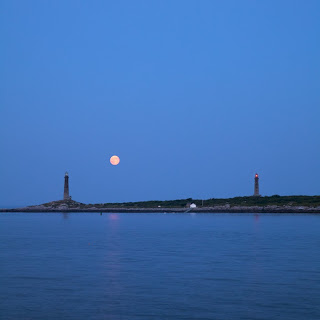On the wall in the narrow, arched second floor corridor of
Villa Terrace Decorative Arts Museum two rugs hang side by side. At a glance
the similarities are more noticeable than the differences. Three groupings of
large figures run vertically down the center of a space bounded by a precisely
framed and detailed border design. The rug on the left is darker overall and
more earthy in coloration, while the one on the right has a brighter, light tan
background. This, combined with a simpler background design makes the figures
on the right pop out more emphatically. The overall composition is the same,
however, and the shapes and clothing styles of the central figures are nearly
identical.
They are beautiful as well as exquisitely crafted, made with
hand-spun and dyed, tightly knotted wool. Admirable for their utility as well
as the quality of design and workmanship, a superficial appreciation might
accrue to a cursory inspection. “Nice colors,” I overheard a visitor say in
passing at the exhibit opening last night.
If your examination of these two remarkable rugs ended there
you would miss what is arguably the most important feature of the rugs and a
telling if visually subtle contrast between the two. The figures on the left
hold guitars and other musical instruments, while those on the right grip
assault rifles, rocket launchers, and other weapons. Furthermore, in the
background on the left are stylized flowers, birds and other animals. The right
includes clearly articulated tanks and warplanes.
The exhibit is called “
Afghan war rugs: the modern art of central asia.” It will be on display at Villa Terrace through January 6, 2014.
The rugs vary in size. Some are no larger than a small doormat; others hang
floor to ceiling. Most are figurative and contain graphic depictions of modern
weapons and warfare, as suggested in the title.
For anyone familiar with the typical rugs of central Asia,
reactions to these are likely to include surprise if not shock. Many are far
less subtle than the ones described above. In a room nearby, for example, is
one that could easily elicit a strong emotional reaction. The top half depicts
the New York skyline. The twin towers of the World Trade Center stand tall
against a serenely blue sky. That sky also contains a single jet airliner
flying directly towards the nearer tower. In the bottom half are a precisely
detailed helicopter, an M1 Abrams tank, a soldier with upraised assault rifle,
a surface-to-air rocket launcher, and several warplanes. These all overlie a
map of Afghanistan. Dividing the two panels is a black band containing the
words “waragainst-terrorist.” The parallel design leaves little room for
interpretation of the bold pronouncement.
Most of the rugs in the exhibit are fairly recent creations,
the oldest ones having been made in the 1970s. Seeing modern weaponry, depictions
of contemporary cityscapes, as well as obvious references to 9/11 and the
familiar war in Afghanistan, it is tempting to conclude that the grim subject
matter is a recent development and a reaction to the country’s wars with first
Russia and then the United States. Indeed, the wall texts and the essays in an
accompanying brochure examine the history of these and other conflicts and
include descriptions of specific weaponry employed by the various parties
involved. Many of these weapons are depicted with great accuracy in the rugs.

However, at least one of the wall panels explained that the
presence of weapons and the war-related imagery in Afghanistan’s artistic
output predates recent events and is attributable to a more general
belligerence based on tribal culture. “The long-standing martial traditions of
the Pashtun (ethnic Afghans) guaranteed their social importance. Weapons were
awarded upon puberty, and were a central decorative element with a powerful
aesthetic charge for men and their homes….”
This exhibit of Afghan war rugs is not only well worth a
visit. I believe it presents a truly unique body of work that combines
idiosyncratic themes, ethnographic depth, and aesthetic quality. Villa Terrace
is the premier venue for this exhibit in the United States. Milwaukeeans are
lucky to have the opportunity to see it.







